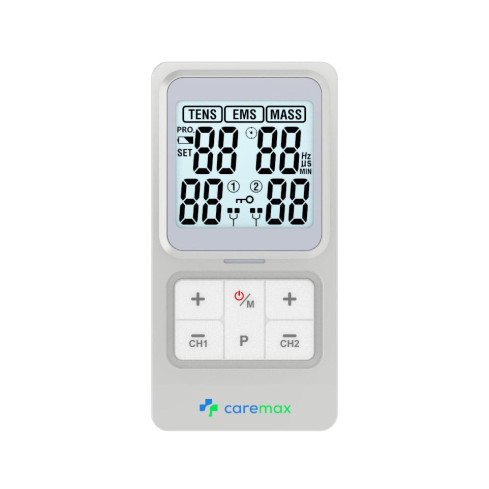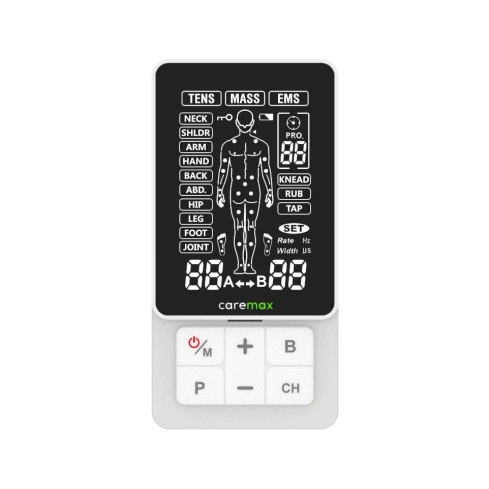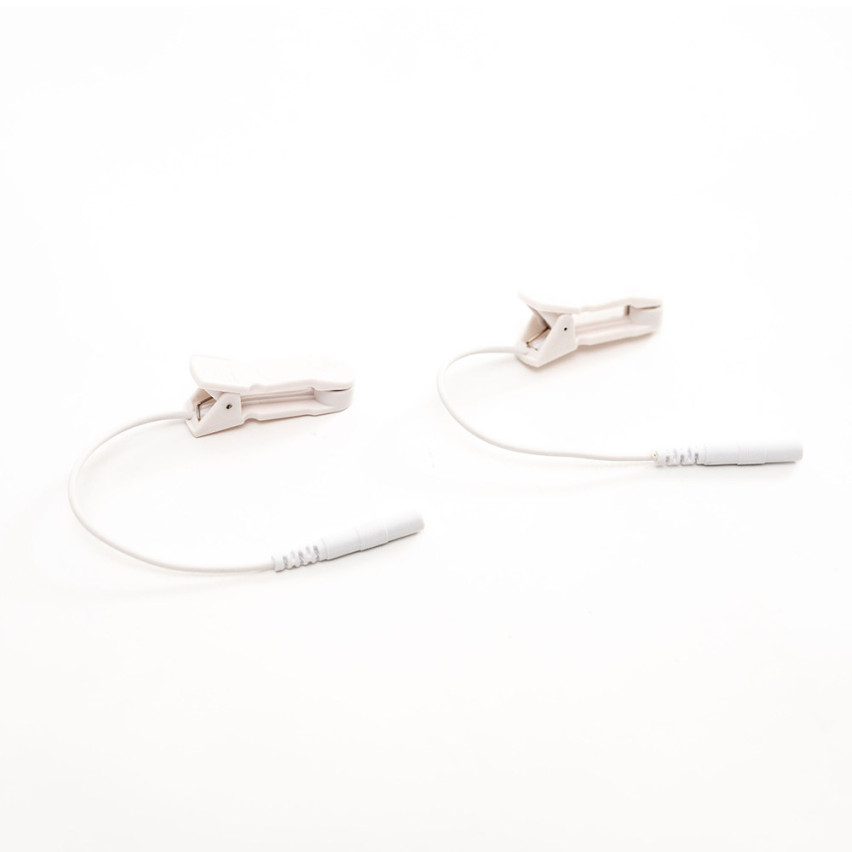Product added to cart
- Home
- TENS & EMS
- Using TENS Machine for Post Covid Chronic Fatigue
Post-COVID chronic fatigue presents as ongoing tiredness persisting beyond the early illness phase, resembling chronic fatigue syndrome (CFS) in its symptoms and impact. Distinguishing between the two can be challenging due to overlapping features, potentially complicating diagnosis and management. While post-COVID fatigue may improve with time for some, others may develop chronic fatigue syndrome. This article will describe how you can use a TENS machine to assist with either or both of these conditions.
What is Chronic Fatigue Syndrome?
Chronic fatigue syndrome (also known as myalgic encephalomyelitis) is a condition that leads to significant tiredness and sleepiness, which can be detrimental to quality of life. This condition can occur as a result of experiencing a COVID infection. Often not related to bed rest or sleep quality. This can occur suddenly and progress for a prolonged period. According to the Royal Australian College of General Practitioners, this is a less common condition that affects 420 out of 100,000 people [1]. Additionally, chronic fatigue syndrome preferentially affects more women than men.
What causes chronic fatigue?
Currently, there is no definitive cause for chronic fatigue syndrome. Further research is required to determine the definitive cause of chronic fatigue syndrome. Post-covid fatigue can occur as a result even after recovering from COVID [8]. However, there are some theories that researchers suggest that could be related to chronic fatigue, including [2]:
- Infectious diseases, such as bacteria (i.e., Candida albicans, Borrelia burgdorferi, etc.) and viruses (i.e., Herpes virus, enterovirus, coronavirus, etc.),.
- Problems with the immune system
- Hormonal imbalances
Range of Chronic Fatigue Symptoms
The most common and notable symptoms of Chronic Fatigue Syndrome is fatigue, which lasts more than 6 months. According to the Royal Australian College of General Practitioners [1], this type of fatigue can be best described as:
- Having no specific cause
- Relapsing or constant
- Having a definitive onset
- Not related to activities that exert more energy
- It doesn’t get better with rest.
- Impacts livelihood, including work, social, or personal activities
In addition, other symptoms that may accompany chronic fatigue symptoms include:
- Impairment in concentration and/or memory
- Sore throat
- Tender lymph nodes
- Muscle aches and pains
- Joint pain without signs of swelling
- Headaches
- Poor sleep
- Fatigue after exercise that lasts more than 24 hours
Traditional Therapies for Chronic Fatigue
Currently, there is no cure for chronic fatigue syndrome. However, there are certain therapies that can help alleviate chronic fatigue, including [3] and [4].
- Implementing “Stop. Rest. Pace” strategies.
- Seeing a psychologist and/or counsellor
- Stress management
- Educating carers, including family and friends
- Talking to your GP about medications, including antidepressants, analgesics, and supplements
What is a TENS machine, and how can it help chronic fatigue syndrome?
Joint and muscle aches can be symptoms related to chronic fatigue syndrome. This can be unpleasant and may contribute to fatigue and associated lifestyle impairments. TENS machines are portable devices that can be used to help alleviate pain. They can be used to help with immediate or sustained periods of pain relief [4]. Additionally, there is newer research that suggests stimulation of the vagus nerve using neuromuscular electrical stimulation can reduce symptoms by up to 30%. However, research is limited, and optimal treatment procedures have yet to be found [5].
Using Caremax TENS machine for Chronic Fatigue
Discover the most sought-after products below essential for effective treatment.
 |
 |
 |
| Caremax 2.0 Classic TENS machine | Caremax 2.0 Pro TENS Machine |
What's the best way to use a TENS machine for chronic fatigue syndrome?
Here are the best practices for using a TENS unit:
-
Position of electrode pads for chronic fatigue
Symptoms associated with chronic fatigue syndrome include joint aches and pains. The electrode pads can be placed over the areas that are sore. Typically, the pads are placed around the area requiring pain relief [5]. You can refer to the instruction manual that comes with the TENS machine purchased from Caremax.
-
Conductive garments as an alternative to electrode pads
Conductive garments can be used as an alternative to electrode pads. Conductive garments can be applied so that you receive pain relief treatment for more specific body regions, including the hand, foot, knee, etc. A variety of conductive garments for different body areas can be found here. For symptomatic control, vagal nerve stimulation has shown some benefits for patients with chronic fatigue syndrome. Caremax provides ear clips that are connected to TENS machines for vagus nerve treatment. However, more research is required to determine how best to use this type of treatment for people with chronic fatigue syndrome.
-
Setting the TENS Mode for Chronic Fatigue
There are several TENS settings when assisting with chronic fatigue syndrome, including intensity, frequency, and pulse width. However, more research needs to emerge to determine the optimal management of chronic fatigue syndrome using TENS.
-
Setting the Pulse Rate (Frequency) for Chronic Fatigue
The frequency on the TENS machine can be adjusted to assist with different forms of pain relief. Frequency measures how many electrical impulses are delivered within a second. Higher frequencies (90–130 Hz) can be used to help with more immediate but shorter-term pain relief. While smaller frequencies (2–5 Hz) can be used for more prolonged pain relief, which is more appropriate for managing chronic pain,.
Additionally, frequency can also be adjusted to stimulate the vagus nerve for overall symptomatic relief. A literature review by Yap et al. (2020) [6] showed that most researchers used 1–30 Hz to help stimulate the vagus nerve. However, there is limited research about optimal frequency stimulation to treat chronic fatigue syndrome.
-
Setting the Pulse Width for Chronic Fatigue
Pulse width measures the time in between pulses. Less research has been performed about the importance of pulse width when using the TENS machine [4]. A pulse width of 50–250 μs has been suggested to help with pain relief. For those seeking vagal nerve stimulation, most researchers use pulse widths between 0.2 and 1.0 ms [5].
-
How Often Should You Use Your TENS Machine for Chronic Fatigue?
When used for pain relief, effective treatment for pain relief can be felt for treatments lasting around 30 minutes daily [4]. For vagal nerve stimulation, the TENS machine can be used for up to 2-3 sessions of 20–30 minute blocks per day [6].
Other Home Remedies to Relieve Chronic Fatigue
At the moment, there is no cure for chronic fatigue. The most important home strategies to help with this condition include: 1) pacing and resting as necessary; and 2) finding strategies to reduce associated symptoms. Remedies that assist with chronic fatigue syndrome will vary from person to person. You can find more information at Emerge, an organisation dedicated to helping those with chronic fatigue syndrome.
Where and when to not use TENS machines
While TENS machines are generally safe, it's important to use them with care in specific situations and areas. Avoid applying the TENS machine to damaged skin (such as wounds or cuts), regions with altered sensation (like tingling or reduced sensitivity), swollen areas, near tumours or blood clots, sites exposed to radiotherapy or radiation, and around vital arteries in the neck (especially the carotid region). When it comes to electrode placement around the face or head, consult a qualified healthcare professional for safety considerations [7].
Certain individuals, such as pregnant women, individuals with implanted devices (like pacemakers or neurostimulators), those dealing with cognitive or mental challenges, and those unable to consent to treatment, should either refrain from using TENS units or seek advice from their GP before doing so [7]. Those with chronic fatigue syndrome should cease TENS treatment immediately if symptoms begin to worsen.
Are there any risks of side effects when using a TENS machine?
Transcutaneous Electrical Nerve Stimulation (TENS) is a commonly employed technique for managing pain, employing low-voltage electrical currents administered via electrodes to reduce discomfort. Although TENS is generally deemed safe, it's important to understand its potential side effects. This summary will describe both common and more severe side effects linked with TENS usage, highlighting the importance of proper usage and seeking immediate medical attention if adverse reactions occur [7]. Should any side effects arise, discontinuation of the treatment is essential.
Commonly reported side effects:
- Skin irritation
- Unusual sensations around the treatment area
Less frequently encountered side effects:
These may arise when the TENS unit is used improperly or in unsafe locations. Individuals unsuitable for TENS treatment may experience more pronounced side effects, including:
- Rashes
- Increased pain
- Seizures
- Interference with implanted medical devices
- Strokes
- Blood clots
- Skin damage
- Burns
References
- Royal Australian College of General Practitioners. (2003). Chapter 11: Musculoskeletal Pain. Retrieved from https://www.racgp.org.au/getattachment/33a724c5-fcaa-4ab6-9f9e-d1e9b172e142/attachment.aspx
- Sluka, K. A., & Walsh, D. (2003). Transcutaneous electrical nerve stimulation: Basic science mechanisms and clinical effectiveness. Journal of Pain, 4(3), 109–121. https://doi.org/10.1054/jpai.2003.434
- EMERGE Australia. (n.d.). Management and Support. Retrieved from https://www.emerge.org.au/management-and-support/
- Watson, T. (2017, August 9). Transcutaneous Electrical Nerve Stimulation. Archived from https://www.wwmsi.com/documents/WWMSI_Transcutaneous_Electrical_Nerve_Stimulation_Tim_Watson.pdf
- Bollinger, E., Hurrle, T., Heitkemper, T., Braun, N., and Zahn, P. (2020). Transcutaneous electrical nerve stimulation in patients with cancer: A retrospective study of tolerance and effectiveness. bioRxiv, 2020.02.20.958249. https://doi.org/10.1101/2020.02.20.958249
- Stanos, S. P., & Houle, T. T. (2020). Interventional pain procedures in the management of chronic pain. Current Pain and Headache Reports, 24(5), 1–10. https://doi.org/10.1007/s11916-020-00848-7
- University of Iowa Hospitals & Clinics. (2018). Contradictions and Precautions. Retrieved from https://www.healthcare.uiowa.edu/marcom/uihc/pain_medicine/contraindication_precautions_best062018.pdf
- Saracino, K. T., & Lovelace, T. L. (2023). Electrotherapy for chronic pelvic pain: A systematic review. EClinicalMedicine, 58, 1–9. https://doi.org/10.1016/j.eclinm.2023.101033
Categories
- TENS & EMS (19)
- Latest News (41)
- Massager (2)
- Nebuliser (8)
- Skin Care (3)
- Period Pain Management (1)
- Fitness (2)